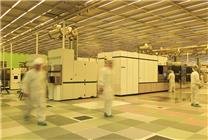AI and Salmon Farming: Norway’s Innovative Approach to Aquaculture
Summary:
- Norway is harnessing advanced AI technology and supercomputing power to revolutionize salmon farming.
- The newly developed Olivia supercomputer enhances computational efficiency, ranking among the world’s leading supercomputers.
- Innovative partnerships leverage excess heat from supercomputers to support sustainable aquaculture.
In the icy landscapes of Northern Europe, Norway stands out as a premier salmon-producing region, recognized worldwide for its quality fish farming. Recently, Norwegian researchers have embarked on an innovative journey, blending artificial intelligence (AI) with aquaculture. This pioneering effort aims to determine whether the integration of AI technologies can enhance salmon production, creating a scalable model for the future.
The Olivia Supercomputer: A Technological Marvel
This week marked a significant milestone in Norway’s scientific landscape with the unveiling of the Olivia supercomputer, the most sophisticated computational resource in the nation. Developed by HPE for Sigma2, Norway’s national scientific computing facility, Olivia utilizes a combination of AMD CPUs and NVIDIA GPUs to deliver unprecedented performance.
The supercomputer is outfitted with 504 AMD Turin EPYC processors and 304 NVIDIA Grace Hopper GPUs, boasting a capacity storage system of 5.3 petabytes. With a performance capability of 13.2 petaflops, Olivia ranks 134th among the TOP500 supercomputers globally. While this may seem modest compared to other world-class machines, it represents a remarkable 16-fold increase in Norway’s supercomputing capabilities, effectively positioning the country as a leader in technological innovation.
Energy Efficiency and Environmental Considerations
One of the standout features of the Olivia supercomputer is its energy efficiency. The system, primarily powered by the Grace Hopper architecture, incorporates a 72-core ARM CPU and H100 GPUs, complemented by 144 GB of high-bandwidth memory (HBM). Notably, Olivia consumes 30% less power than its predecessor, making it not only the most powerful but also one of the most environmentally conscious supercomputers available.
Despite its energy efficiency, supercomputers inherently generate substantial waste heat through their liquid cooling systems. To address this issue and promote sustainability, Sigma2 is collaborating with local salmon farms to capitalize on this excess heat. The hot water produced as a byproduct of supercomputing activities is now redirected to support salmon farming operations, creating a symbiotic relationship between advanced technology and aquaculture.
Transforming Salmon Farming with AI
The integration of AI into salmon farming is not just a theoretical concept; it represents a significant step towards a more efficient and sustainable aquaculture model. Utilizing advanced data analytics and predictive modeling, AI can help farmers optimize various aspects of production, from feed efficiency to monitoring fish health. This enhanced capacity allows for better management of resources, ultimately yielding healthier fish and reducing environmental impacts.
Furthermore, by adopting AI technologies, Norwegian salmon farmers can enhance their overall production and respond proactively to the dynamic challenges posed by climate change and environmental regulations. The collaboration between supercomputing resources and aquaculture not only exemplifies Norway’s commitment to innovation but also sets a precedent for other nations seeking to modernize their fish farming methods.
Conclusion: A New Era for Aquaculture
Norway’s initiative to merge AI technologies with salmon farming highlights a transformative vision for the future of food production. As the country continues to leverage its supercomputing capabilities through the Olivia supercomputer, the potential for sustainable aquaculture practices expands, paving the way for a new era in aquaculture innovation.
The implications of this partnership between AI and salmon farming are significant, offering a model that other countries can emulate. With a focus on sustainability, efficiency, and technological advancement, Norway stands at the forefront of a global movement poised to redefine how we cultivate aquatic resources.
In conclusion, the future of salmon farming is not just about fish; it’s about harnessing technology to create a balanced, sustainable ecosystem that benefits not only the industry but the environment as well. As AI continues to evolve, its applications in aquaculture will undoubtedly expand, fostering a deeper understanding of marine ecosystems and enabling more responsible farming practices worldwide.






